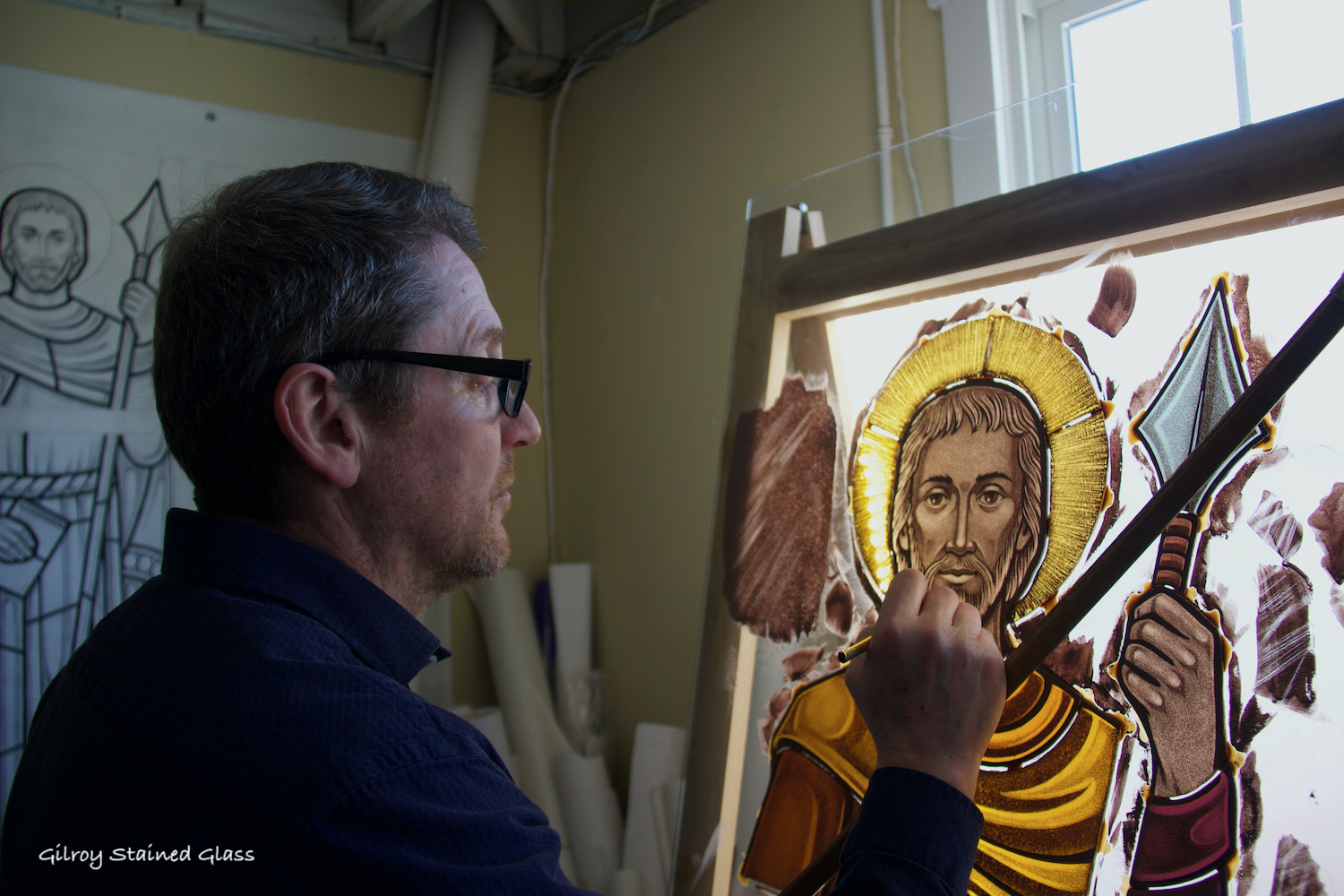
In glass painting the oxide is applied over the entire surface of the glass and removed to produce the tones, semi-tones and highlights – painting in the negative. It’s not the brush mark itself that you’re solely concentrating on, but the shapes created around it that give you the illusion of three dimensions. The most complex form of this is painting faces (hands are pretty tricky too, but let’s focus on faces…). Often it helps to exaggerate features a little, sharpening cheekbones or making a face slightly thinner to allow for the expansion of light when it is viewed. The blending required to make a face look really good is quite time consuming, often created using the tip of a needle, however getting it just right is really rewarding.
